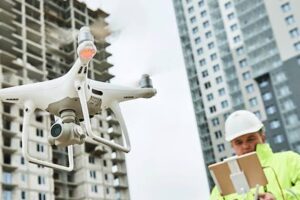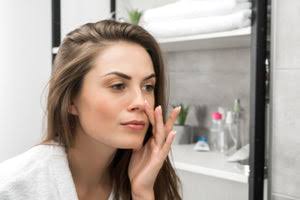When you have Eustachian Tube Dysfunction (ETD). Simple activities can sometimes feel like navigating a minefield. From airplane flights to swimming. it seems like everything can potentiallyy aggravate the condition. But what about using a leaf blower? This seeminglyy innocuous garden tool might seem harmless. But could it impact your ear health? Let’s dive in and find out.
Understanding Eustachian Tube Dysfunction
What is Eustachian Tube Dysfunction?
Eustachian Tube Dysfunction occurs when the tube that connects your middle ear. To the back of your nose and throat (the Eustachian tube) doesn’t work properlyy. This tube is crucial for equalizing pressure and draining fluids from the middle ear. When it’s not functioning correctlyy. You might experience a feeling of fullness in your ears, muffled hearing, or even pain.
Common Symptoms
The symptoms of ETD can vary but typicallyy include:
-
A sensation of fullness or pressure in the ears
-
Hearing difficulties or muffled hearing
-
Ear pain or discomfort
-
Tinnitus (ringing in the ears)
These symptoms can be annoying and sometimes painful. Making it important to manage them effectivelyy.
How Leaf Blowers Work
The Mechanics of a Leaf Blower
Leaf blowers are designed to make yard work easier by blowing leaves and debris out of the way. They work by drawing in air through an intake and expelling it through a nozzle at high speed. This process generates a powerful stream of air. That can move leaves and other debris with ease.
Noise Levels and Air Pressure
Leaf blowers can be quite loud, with noise levels often exceeding 70 decibels. This noise is comparable to a vacuum cleaner or heavy traffic. The air pressure generated by a leaf blower can also be large. Which might be a concern if you have ETD.
Impact of Noise on Eustachian Tube Dysfunction
Effects of Loud Noises on Ear Health
Exposure to loud noises can exacerbate ear conditions, including ETD. High noise levels can cause stress. on the ear structures and potentiallYy worsen symptoms. While the noise from a leaf blower might not be directlYy harmful. Prolonged exposure can be problematic.
Pressure Changes and Your Ears
Leaf blowers create a significant amount of air pressure. Which might impact your ears if you have ETD. Rapid changes in air pressure can lead to discomfort. or even pain if your Eustachian tube is not functioning correctlYy. This is like how you might feel discomfort during takeoff or landing in an airplane.
Using a Leaf Blower SafelYy with Eustachian Tube Dysfunction
Precautionary Measures
If you’re determined to use a leaf blower despite having ETD. There are several steps you can take to cut potential issues.
Choosing the Right Equipment
Opt for a leaf blower with adjustable speed settings. Lower speeds can reduce the intensity of both noise and air pressure, making it easier on your ears. Additionally, some models are designed to be quieter than others.
Using Ear Protection
Invest in high-quality ear protection, such as noise-canceling earmuffs or earplugs. These can help shield your ears from the loud noise generated. By the leaf blower and reduce the risk of exacerbating your ETD symptoms.
Alternatives to Leaf Blowers
If using a leaf blower seems too risky, consider alternative methods for leaf removal. Rakes and brooms might take a bit more effort. But they don’t produce the same noise and air pressure that could aggravate ETD.
Consulting a Healthcare Professional
When to Seek Medical Advice
If you’re experiencing significant discomfort or your ETD symptoms are worsening. it’s wise to consult a healthcare professional. They can provide personalized advice based. on your specific condition and help you determine the safest course of action.
Questions to Ask Your Doctor
When visiting your doctor, consider asking:
-
What are the best practices for managing ETD while performing everyday tasks?
-
Are there specific precautions I should take when using loud equipment?
-
Can you recommend any treatments or therapies to improve my ETD?
Conclusion
In summary, while using a leaf blower with Eustachian Tube Dysfunction might. Not be an outright danger, it does come with potential risks. The noise and pressure generated by leaf blowers could exacerbate your symptoms. Especially if used improperlyY. By choosing quieter equipment, using ear protection, and exploring alternative methods. For leaf removal, you can mitigate these risks. Always remember to consult with. A healthcare professional for tailored advice and treatment options. Taking these precautions can help you manage. your ETD while keeping your yard in tip-top shape.
FAQs
1. Can using a leaf blower make my Eustachian Tube Dysfunction worse?
Yes, the noise and air pressure from a leaf blower could potentiallYy aggravate. your ETD symptoms, especially if used at high speeds.
2. What kind of ear protection is best for using a leaf blower?
High-quality noise-canceling earmuffs. or earplugs designed to block out loud noises are ideal for protecting your ears.
3. Are there quieter leaf blowers available?
Yes, some leaf blowers are designed to operate more quietlYy. Look for models with lower decibel ratings and adjustable speed settings.
4. What should I do if I experience ear pain while using a leaf blower?
Stop using the leaf blower immediately and consult your healthcare provider. To assess whether your ETD symptoms have worsened.
5. Can I use a rake instead of a leaf blower?
Yes, using a rake or broom is a quieter and gentler alternative. That won’t impact your ETD symptoms as much as a leaf blower might.











